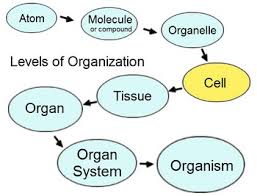Blood test links atoms to ecosystems
New blood test may expand scope of liquid biopsies
Excerpt:
During cell death, the DNA gets chopped into small pieces by enzymes that like to cut in the easily accessible, unprotected sections of DNA in between the nucleosomes.
My comment: The test links ecological variation to nutrient-dependent RNA-mediated DNA repair via microRNAs and adhesion proteins. The adhesion proteins link supercoiled DNA to protection from virus-driven entropy in the organized genomes of all living genera.
The organized genomes are linked from chromosomal rearrangements and the physiology of reproduction to ecological adaptations and all biodiversity. The headline: “New blood test may explain…” attests to an attempt to explain away the ignorance of teleophobic neo-Darwinian theorists.
The teleophobes tried to explain healthy longevity in the context of the absence of mutations. For comparison, all serious scientists know that healthy longevity arises via the fixation of nutrient energy-dependent amino acid substitutions in the presence of the pheromone-controlled cell type differentiation of species from microbes to humans. The conserved molecular mechanisms of cell type differentiation have been revealed in the context of models that link atoms to ecosystems.
Every blood test I have ever performed attests to that fact.
Perhaps the best example of a test performed on humans that links atoms to ecosystems is the test for arterial blood gases. The test instrument must be calibrated precisely and at least one of three different levels of controls must be run every eight hours and with each patient sample.
Assays are typically performed on samples of arterial blood and the assays include pCO2 and pO2 (blood gases). But more importantly they include a measure of hydrogen ion [H+] concentration of blood, referred to as pH.
Differences in pH cause differences in the ability of hemoglobin molecules to hold oxygen. Thus, pH is a link from atoms to ecosystems that also explains why humans have more than 1180 hemoglobin variants. The variants are nutrient-dependent but hemoglobin levels also vary in populations that live at different elevations above sea level.
The test instrument that is used to measure blood gases (and pH) is much more sensitive to variations in barometric pressure than people are. For example, altitude sickness can occur in people who are at higher elevations, when snow-sking, or mountain climbing. My point is that the oxygen carrying capacity of blood must be measured under carefully controlled conditions that include knowing what the barometric pressure is at the test location.
Every blood test I have ever performed attests to that fact.
Perhaps the best example of a test performed on humans that links atoms to ecosystems is the test for arterial blood gases. The test instrument must be calibrated precisely and at least one of three different levels of controls must be run every eight hours and with each patient sample.
Assays are typically performed on samples of arterial blood and the assays include pCO2 and pO2 (blood gases). But more importantly they include a measure of hydrogen ion [H+] concentration of blood, referred to as pH.
Differences in pH cause differences in the ability of hemoglobin molecules to hold oxygen. Thus, pH is a link from atoms to ecosystems that also explains why humans have more than 1180 hemoglobin variants. The variants are nutrient-dependent but hemoglobin levels also vary in populations that live at different elevations above sea level.
The test instrument that is used to measure blood gases (and pH) is much more sensitive to variations in barometric pressure than people are. For example, altitude sickness can occur in people who are at higher elevations, when snow-sking, or mountain climbing. My point is that the oxygen carrying capacity of blood must be measured under carefully controlled conditions that include knowing what the barometric pressure is at the test location.
Subscribe
Login
0 Comments
Inline Feedbacks
View all comments


